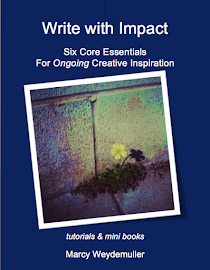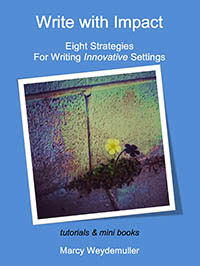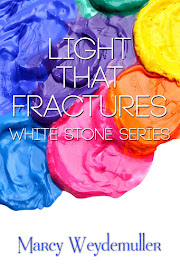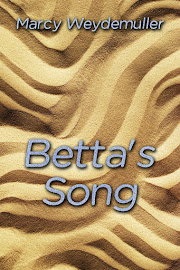 At this point you’ve
revised the content, done a spell check, made sure your computer program used
the right word such as from and not form, checked for extra space breaks, had
an impartial reader give you feedback and have followed all the submission
requirements re word count, font size, and margins if required. Now take a
close look at overall clarity.
At this point you’ve
revised the content, done a spell check, made sure your computer program used
the right word such as from and not form, checked for extra space breaks, had
an impartial reader give you feedback and have followed all the submission
requirements re word count, font size, and margins if required. Now take a
close look at overall clarity.Thursday, August 27, 2015
Overview Markets: Part Four: Manuscript Preparation
Workshop: An Introduction to Writing for Children
and Young Adults
My apologies for the delay
on Part Four.
Are you ready to send your
article out? Have you lined up a list of potential markets? If one magazine
says no thanks, get ready to send it to the next and keep going down your list.
 At this point you’ve
revised the content, done a spell check, made sure your computer program used
the right word such as from and not form, checked for extra space breaks, had
an impartial reader give you feedback and have followed all the submission
requirements re word count, font size, and margins if required. Now take a
close look at overall clarity.
At this point you’ve
revised the content, done a spell check, made sure your computer program used
the right word such as from and not form, checked for extra space breaks, had
an impartial reader give you feedback and have followed all the submission
requirements re word count, font size, and margins if required. Now take a
close look at overall clarity.
In his book, The First Five Pages, Noah Lukeman divides the primary reasons that
manuscripts get rejected by editors into three main categories: Preliminary
Problems, Dialogue, and The Bigger Picture.
Preliminary problems include the normal
spelling, grammar and punctuation but go beyond to include word choice, weak
sentences, presentation, style and Lukeman also adds sound, style, adjectives
and adverbs.
Basically look at your language to make sure
it said what you want it to say. Make your words count. Make your sentences
active with strong verbs.
Introduction
Does your opening include a clear topic plus your
position/attitude? Is it interesting? Create curiosity? Attract a reader’s
attention? Indicate a plan of development or a preview of points to be covered?
Why will your readers want to read more?
Paragraph Clarity
Unity: Is
there a clear opening statement of the main point?
Is the material
on target in support?
Support: Is
there specific evidence to support the opening point?
Is there enough specific evidence?
Clarity: Are
they distinct, easily and correctly understood, not only grammatically but also
in concept?
Coherence
Does the article have a clear method of
organization? Are transitions and other connecting words used to tie the
material together easily?
Closing
Is the conclusion satisfying? Did it tie up the article topic
without restating or summarizing the main points? Did it reach out to make
personal or universal observations about the implications of the theme? For the
age audience do you have next steps to suggest to build upon their curiosity?
Action Steps:
1.
Send out your article. :)
Share: What is your topic and age
category you chose? Or share your opening sentence.
Read deep, marcy
Saturday, August 8, 2015
Overview Markets: Part Three: One Sheet: Sample
Workshop: An Introduction to Writing for Children
and Young Adults
Here is an excerpt from my
one sheet for my novel Lightbearer.
It was set on the left hand side of the page with my bio on the bottom right.
On the actual one sheet it is framed in an invisible box, which sets the
following material up almost as a poem in 28 lines. This was important to me as
it helped visualize the tone of the story.
You’ll notice that it
gives genre, age category (implied by young man), main character, and story
question. Basically enough to see if anyone is interested. It’s still general
because I don’t know under what circumstances it will be read, so I’m not
giving all the details yet.
Concrete specifics will
come in the proposal. Then you will need to give the plot line and ending. Note
too that some of this introduction material also appears later on the back
cover as well as marketing text.
In
the land of Lorica, in a place beyond time where prophecies
have been lost in
ancient history and only myth
and legend remain
intertwined with history, a Ka’hane arrives.
“Ask yourself what
would fill you with shame or shrink
your soul to do day
after day. Ask yourself what would be worth
dying for or even
harder, living, for, with no hope of reward
or recognition or
assurance you had chosen rightly. Especially
when the Darkness
returns. What will you choose then?”
Jonne, a young man on
the brink of vocation in Lorica,
is jolted by the
stranger’s piercing remarks which lead him
to emotional,
spiritual, and relational struggles as he tries to discover
the timeless question
of his purpose and identity by becoming
a Lightbearer, a
vocation people no longer even believe exists
or is relevant. The
Lightbearers are a faithful remnant that stand
as watchmen for El
Olam, God everlasting.
Share:
What is your first question re this story after reading this invitation to read
it? Or what details would cause you to say not interested?
Read deep, marcy
Thursday, August 6, 2015
Overview Markets: Part Three: One Sheet
Workshop: An Introduction to Writing for Children
and Young Adults
One-Page Sell Sheet
1) To Pitch
Think of it as a visual pitch and cover
letter together, but with a shorter bio. Author Terry Burns says “it is a page with key information in that
an editor can pull out and take to a committee meeting to pitch the book.” He
includes an attention getting phrase or question as title. Once again: 1. This is my product.
2. Are you interested?
A potential series can be included here as
well as in the cover letter.
One editor I know occasionally opens the
calendar door for one-sheet submissions. He clearly states some specifics he
wants to see. If he is interested he then requests a brief proposal: a cover
letter, a one-page synopsis and three chapters. What I appreciate is the quick
response. It’s an immediate—yes or no possibility. One caution though when
submitting a one-sheet for a novel or longer non-fiction. Be sure the first or
even second draft is complete. When a publishing house asks for one-sheet
submissions they are usually looking for a completed project not an idea.
However often magazines and journals have
specific topics or set themes and are looking for fresh perspective. One author
I know writes regularly for a well-read audience but she has to wait for an
email invitation from the senior editor to pitch. The timing is tight. If they
say yes, she needs to be able to write up the article within a few weeks. So
she sends two or three different pitches in different categories, as she
doesn’t know where exactly the ‘holes’ are. Often her pitch might not fit the
required immediate timing, but often her ideas will get a follow up invitation
for the next edition.
2) To Prepare
Keep your own set of one-sheet
ideas. Then if an opportunity opens you will be ready.
For example, you’ve
noticed in your research that often the fall/winter issues that request nature
might use pieces on hibernation. You’ve followed all the guidelines and
polished your article till it shines. But they just bought one. No worries. Because
of your research you have two or three alternatives that would be related
without overlapping.
So whenever you research an
article, make one-sheet list of possible sidebar or additional ideas to keep
for your own file. When you have captured a child’s curiosity and hunger for
discovery the best question is what comes next or how or why or where?
Think of your articles as stepping-stones.
And from the research on your novel you will have a potential series of
non-fiction pieces for either magazines, or blog material, or marketing.
Just as a query letter, or
cover letter keep them succinct and inviting.
On Saturday I will post an
example from my novel.
Action Steps:
1.
Take
your query letter from the last blog and turn it into a one-sheet.
2.
Make
a list of side topics to go with your main pitch.
3.
Turn
them into one-sheets.
4.
Make
a list of any information you now need to fully develop these ideas angles into
article or a longer project.
Share: How many article angles do you
have from your original topic?
Read deep, marcy
Subscribe to:
Posts (Atom)








